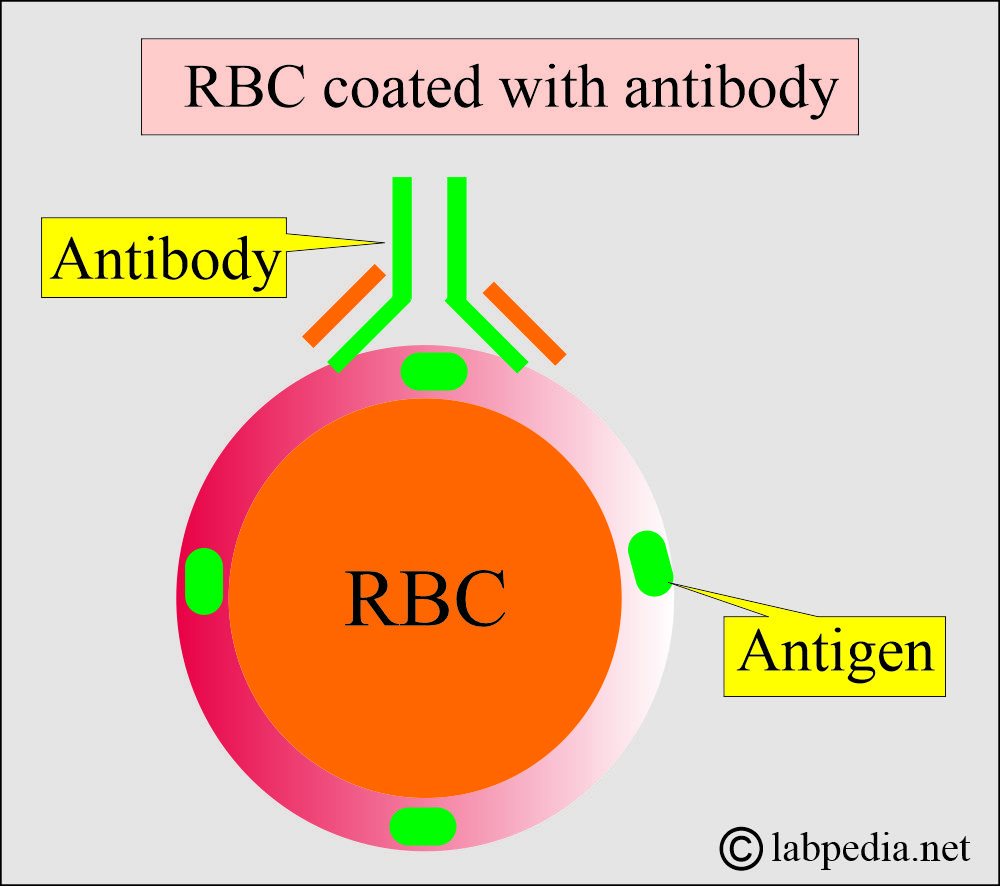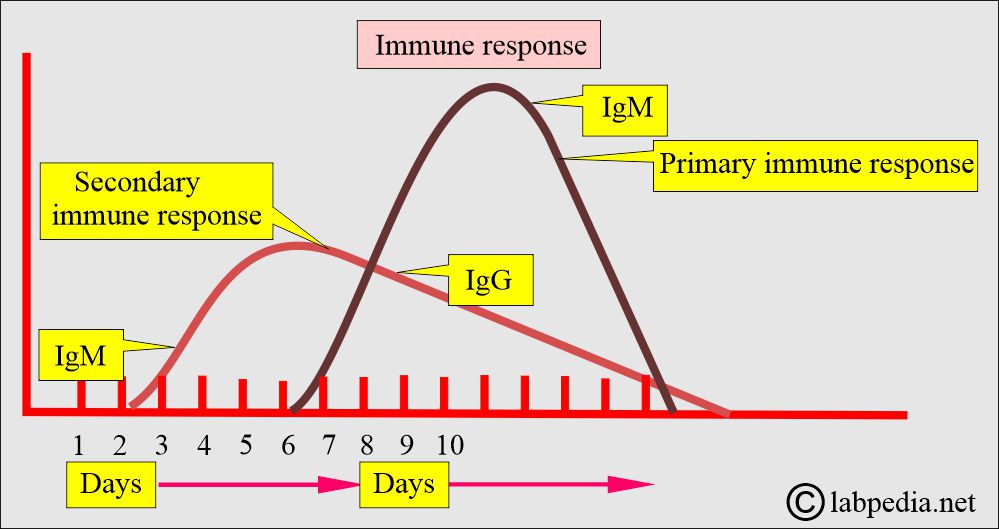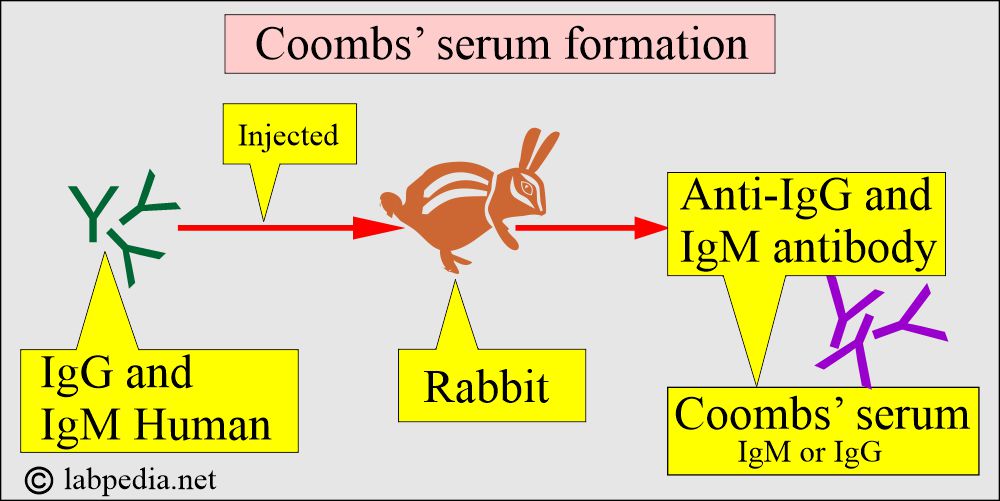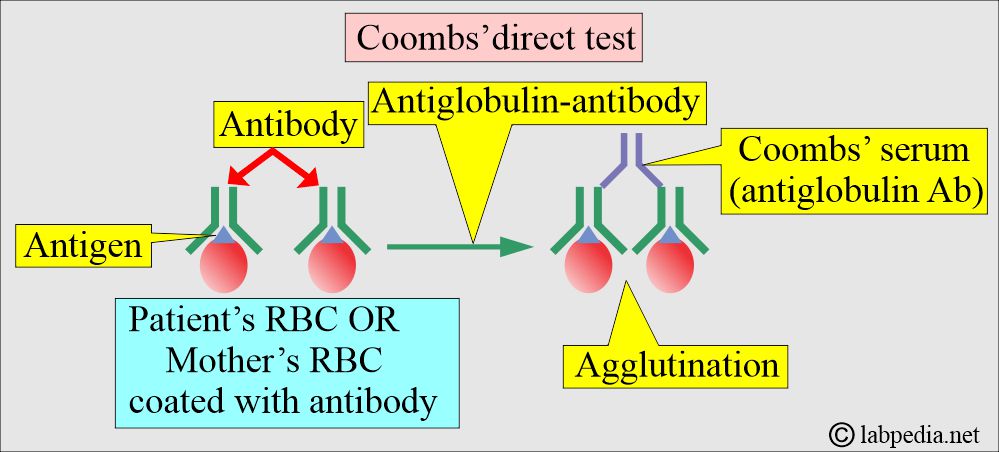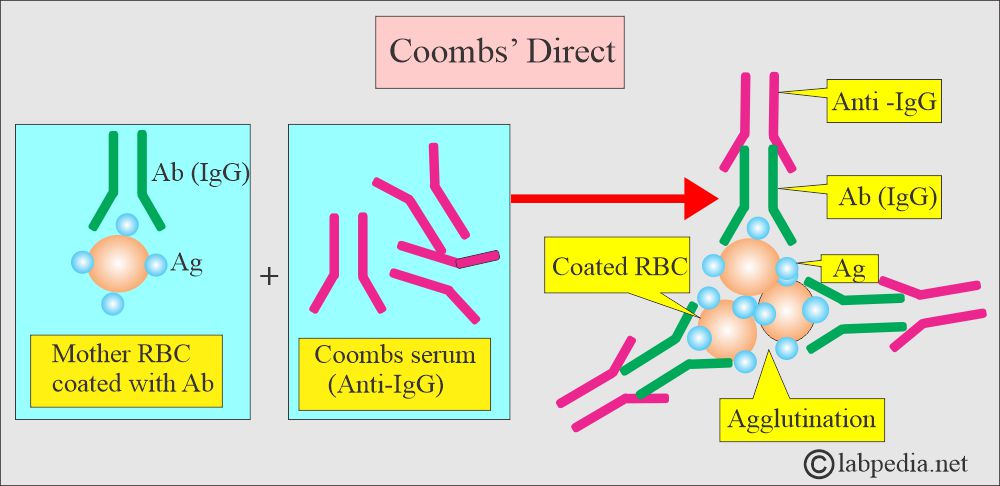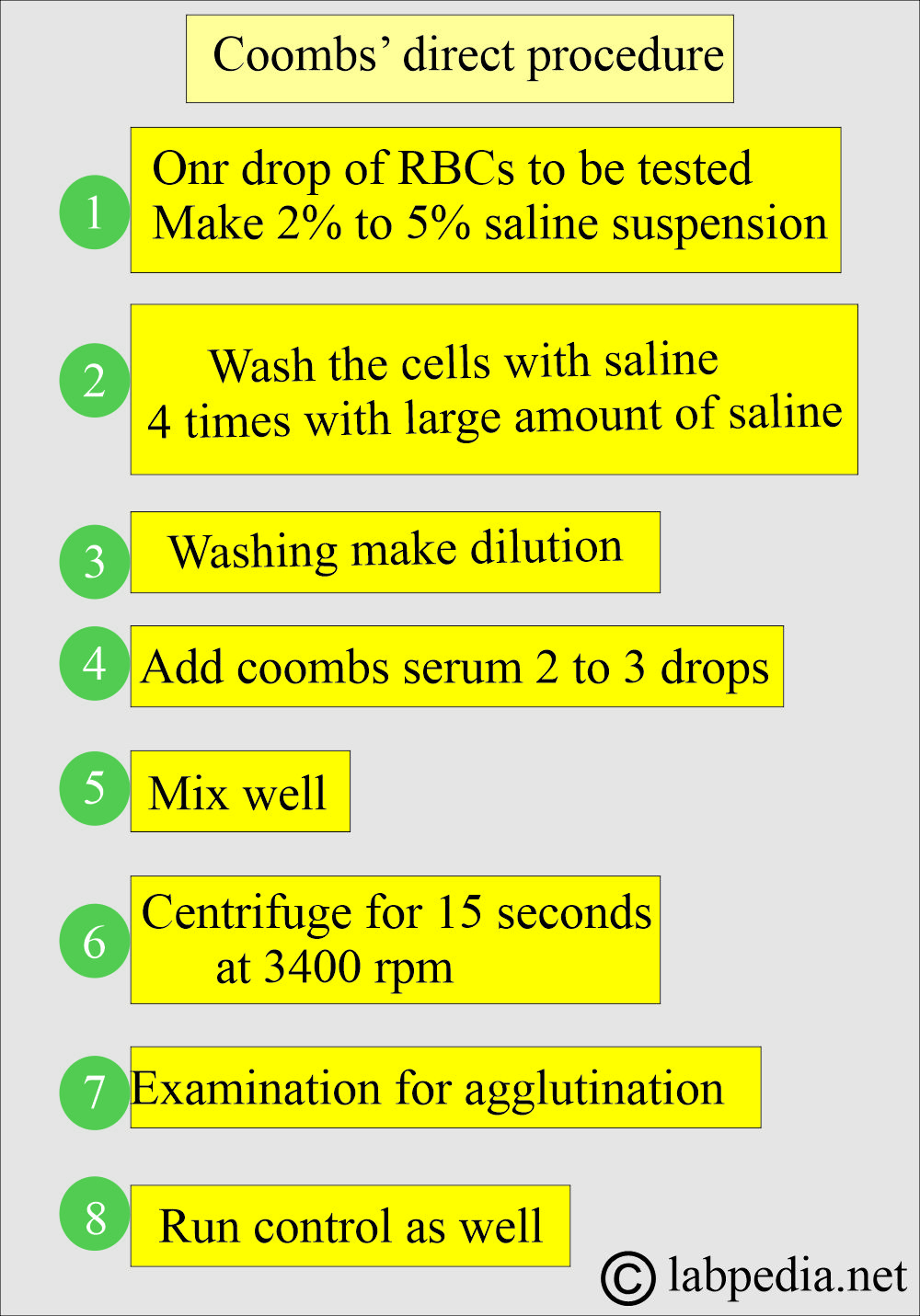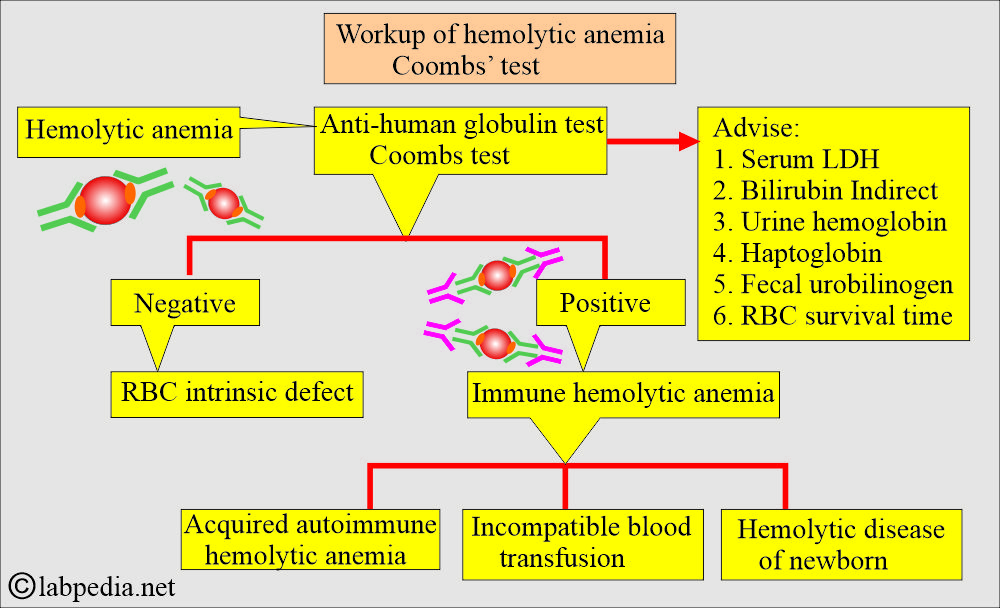Coombs’ Test:- Part 1- Coombs’ Direct, Direct-Anti-globulin test
Coombs’ Test Direct (Anti-globulin test)
What will be the sample for Coombs’ Direct test?
- The blood is collected in EDTA.
- Separate the RBC immediately to prevent the absorption of complement into the RBC.
- Avoid clotted blood if possible. In the case of clotted blood, keep the blood at room temperature. 37 °C until the cells are separated.
- Samples can be stored at 4 °C for up to one week.
What are the indications of the Coombs’ Direct test?
The Coomb’s test is crucial for detecting antibodies in various clinical scenarios.
- To diagnose the hemolytic anemia of the newborn.
- This test is performed on red blood cells (RBC), especially in cases involving a newborn with an Rh-negative mother who is Rh-positive, and in cases of erythroblastosis fetalis.
- T0 diagnoses autoimmune hemolytic anemias.
- To diagnose blood transfusion reactions.
- To diagnose drug-induced hemolytic anemia.
- It also detects C3 on patients’ RBCs.
What are the precautions for the Coombs’ direct test?
- Remember that some drugs can yield false positive Coombs direct tests, including cephalosporins, chlorpromazine, ampicillin, captopril, indomethacin, isoniazid (INH), streptomycin, tetracycline, sulfonamides, and penicillin.
What is the definition of the Direct Coomb’s test?
- Direct Coombs’ test detects antibodies that have coated the RBCs.
How will you discuss the pathophysiology of the Coombs’ Direct test?
- Coombs’ direct test will detect coated RBCs with antibodies.
- Most of the antibodies are due to ABO and Rh antigens.
- Antibodies appear within 7 to 10 days of primary exposure (Primary immune response) and 1 to 2 days in the second exposure (Secondary immune response).
- Once a reaction occurs, these antibodies are coated onto RBCs (RBC-coated antibodies).
- Such antibodies can also develop due to drugs like methyldopa and penicillins (non-blood-grouping antigens).
- Also, autoantibodies can attach to RBC.
What are the signs and symptoms of blood transfusion reactions?
- Fainting and dizziness.
- Fever and chills.
- Rash.
- Back pain and pain in the flanks.
- Hematuria (blood in the urine).
How will you prepare Coombs’ serum (Antibody)?
- It is prepared in rabbits against human antibodies, specifically IgM and IgG.
- Rabbits produce anti-human (IgM and IgG) antibodies, also known as Coombs’ serum.
What is the procedure for Coombs’ direct test?
- Wash the patient’s RBC three times with saline.
- Decant the supernatant saline.
- Now, make a 2% to 5% suspension of these RBCs in saline.
- Add Coombs’ serum and centrifuge.
- Look for agglutination (clumping of RBC).
How will you read Coomb’s direct test?
- It is normally negative; there is no agglutination.
- A positive direct Coombs’ test shows agglutination immediately after centrifugation, indicating that RBCs are coated with antibodies.
- This test is considered positive when the clumping is on a trace scale, ranging from trace to 4+.
How is Coomb’s direct test reported?
| Grade of the reaction | Degree of agglutination |
|
|
|
|
|
|
|
|
|
|
When will you see False-positive results?
- Insufficient washing of the RBCs.
- Over-centrifugation of the test.
- Contaminated reagents.
- If the washed RBCs are left for a longer period.
- It may be seen in multiple myeloma and Waldenstrom’s macroglobulinemia.
What are the conditions showing a positive Coombs’ direct test?
- Autoimmune hemolytic anemia.
- Warm reactive autoantibody.
- Cold-reactive autoantibody.
- Cold hemagglutinin disease is associated with lymphoma and pneumonia.
- Paroxysmal cold hemoglobinuria.
- Systemic lupus erythematosus.
- Drug-induced hemolytic anemia, e.g., penicillin, quinidine, Cephalosporin, and α-methyldopa.
- α-methyldopa hemolytic reaction occurs in <30% of patients with therapy, but only <1% show hemolysis; rarely in the first 6 months of the treatment.
- If it is not found within 12 months of the treatment, it is less likely to see a reaction.
- A reversal takes place from weeks to months after stopping the drugs.
- Hemolytic anemia: Transfusion reaction to incompatible RBC and hemolytic anemia of the newborn.
- Erythroblastosis fetalis.
- Incompatible blood transfusion.
- Delayed hemolytic blood transfusion reaction.
- Malignant diseases:
- Lymphoma.
- Chronic lymphocytic leukemia.
- Acute and chronic leukemias.
- Infections:
- Infectious mononucleosis.
- Mycoplasma pneumoniae
- Weak positive tests are seen in:
- Renal diseases.
- Rheumatoid arthritis.
- Inflammatory bowel disease.
- Epithelial malignancy.
- Weak positive tests usually have no clinical significance.
When will you see Coomb’s direct negative results?
- Hemolytic anemia is caused by an intrinsic defect in the RBC, such as G6PD deficiency or hemoglobinopathies.
- Hemolytic anemias due to weak or smaller amounts of IgG bound to RBCs.
Questions and answers:
Question 1: What sample do you need for the Coombs' direct test?
Question 2: What type of antibody gives a positive Coombs direct test?
Question 3: What is Coombs serum?

